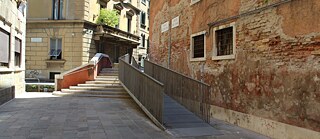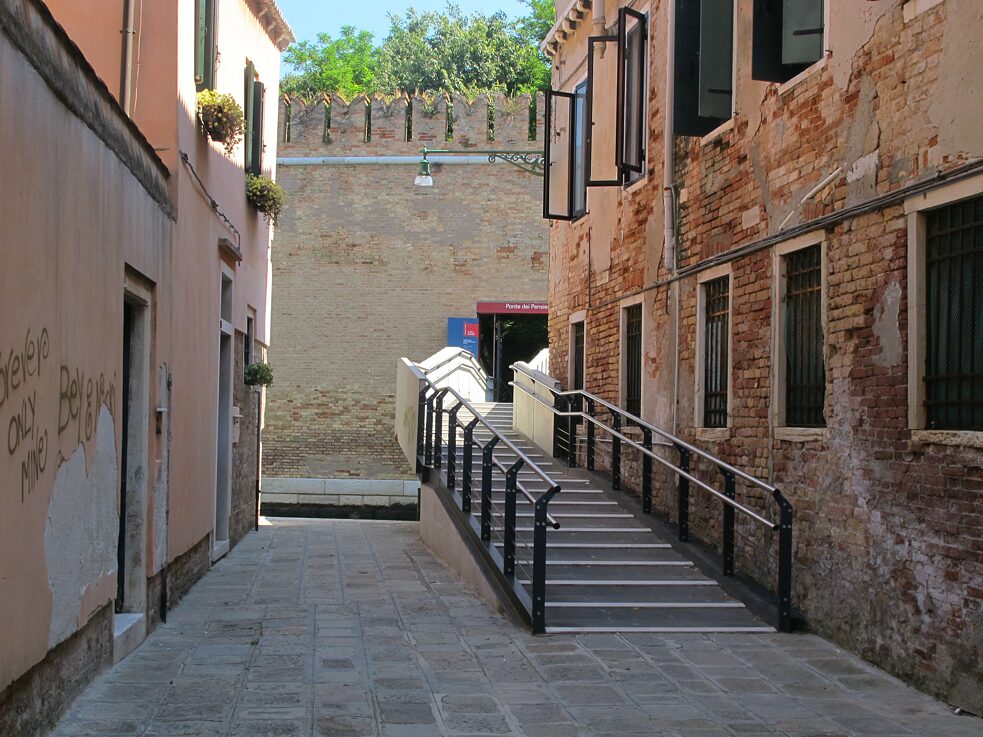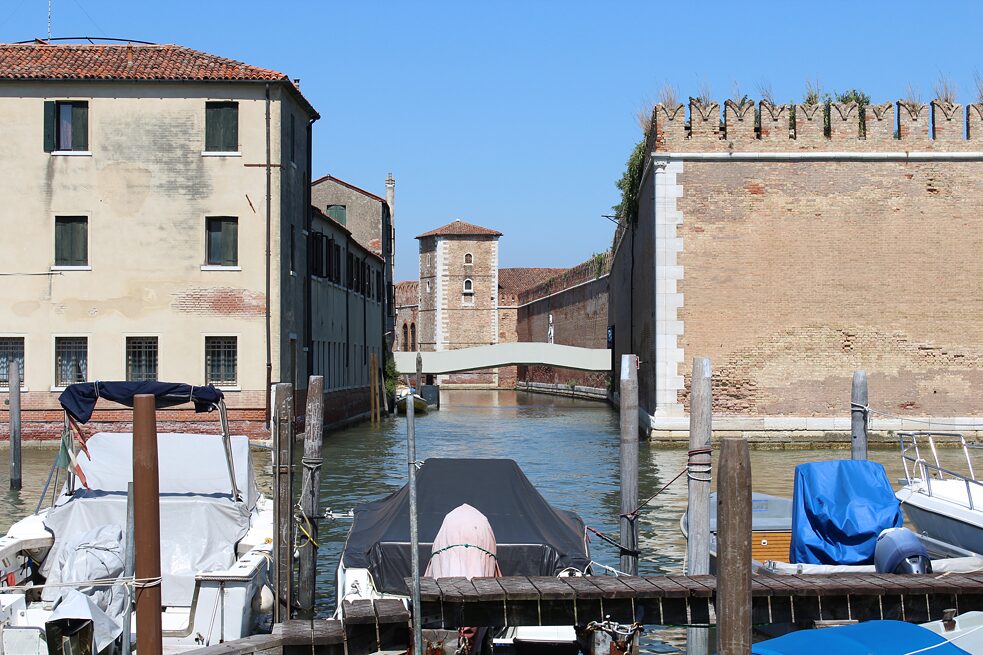Inclusion at the Venice Architecture Biennale A Red Carpet for All

Ponte delle Sechere | Photo (detail): © Valeria Tatano
Open for Maintenance / Wegen Umbau geöffnet is the title of the German Pavilion at the 18th International Architecture Exhibition in Venice. The pavilion is dedicated to exploring matters of repair, maintenance, accessibility, and inclusion. But what does accessibility mean in a city made up of roughly 120 islands and 359 heritage-protected bridges, and whose transport runs mostly on canals? And how inclusive is the Biennale itself?
“Public transport on the water, which used to be totally inaccessible to wheelchair users, has improved a great deal, but the vaporetti don’t reach every part of town,” explains Valeria Tatano, an architecture professor at Venice’s Iuav University and an expert on inclusive design. “The sticking point is the bridges.”Overcoming bridges
Tatano has documented the many new barrier-free routes created by the city in her 2018 book Atlante dell’accessibilità urbana a Venezia, an “atlas of urban accessibility in Venice”. 38 of the city’s 359 bridges can now be crossed by wheelchair.Owing to its peculiar geography, as the architect points out, Venice has experimented more than other cities in ways of providing barrier-free access for people with impaired mobility, on the one hand, while protecting the city’s unique World Cultural Heritage, on the other. One example is the ramps, inspired by the famous, accessible Cordonata capitolina, a staircase that leads up to the Capitol in Rome.
 Ponte dei pensieri
| Foto: © Valeria Tatano
But much remains to be done, insists Tatano: “There are wheelchair-accessible routes in Venice, but they’ve been built in a piecemeal and disconnected way, and that’s the problem.” There’s no barrier-free pathway yet from the train station to the Piazza San Marco (Saint Mark’s Square), for example, though it is in the pipeline.
Ponte dei pensieri
| Foto: © Valeria Tatano
But much remains to be done, insists Tatano: “There are wheelchair-accessible routes in Venice, but they’ve been built in a piecemeal and disconnected way, and that’s the problem.” There’s no barrier-free pathway yet from the train station to the Piazza San Marco (Saint Mark’s Square), for example, though it is in the pipeline.
Accessibility for various needs
According to psychologist Naomi Brenner, the jumble of canals and bridges doesn’t keep everyone with a disability from participating in social life: “Many visually impaired people, for example, find Venice almost more accessible than a city with cars. The same goes for people with mental disabilities because social relations are writ much larger here and everything can be reached on foot.”Naomi Brenner is affiliated with Red Carpet for All, a local association that advocates for the rights of marginalized residents. Among other things, the association strives to make the city’s museums and cultural events accessible to the disabled.
“It’s not enough for a city to be brimming with arts and culture. It also has to be accessible to people with various needs.”
The psychologist sees the Biennale as a great enrichment for Venice: “This is a highly communicative art form that provides plenty of opportunities for discussion, and is therefore also very stimulating for the intellectually impaired.”
Barrier-free communication is only just beginning to catch on in Italy. “Unlike in Germany, the use of ‘easy language’ in Italy is still mostly confined to inclusive education,” observes Brenner. “The Biennale has recently started organizing tours in easy language, but there’s still plenty of room for improvement.”
Physical barriers at the Architecture Biennale
Although all the exhibition pavilions are now equipped with ramps or stairlifts in line with current accessibility regulations, they’re mostly located at the back of the buildings. So not all the visitors can enter the exhibitions via the main entrance, which clearly constitutes a barrier to full inclusion. Ponte dei pensieri
| Photo: © Valeria Tatano
Another physical obstacle for people with reduced mobility is the gravel paths on the grounds of the Giardini della Biennale, where the German Pavilion is situated. “The Biennale should come up with an alternative,” says architect Valeria Tatano. “That doesn’t necessarily mean switching from gravel to asphalt. There are plenty of solutions that are both water-permeable and colour-coordinated with the surroundings.”
Ponte dei pensieri
| Photo: © Valeria Tatano
Another physical obstacle for people with reduced mobility is the gravel paths on the grounds of the Giardini della Biennale, where the German Pavilion is situated. “The Biennale should come up with an alternative,” says architect Valeria Tatano. “That doesn’t necessarily mean switching from gravel to asphalt. There are plenty of solutions that are both water-permeable and colour-coordinated with the surroundings.”In order to give everyone equal access to participation in public life, to make room for everyone on the “red carpet”, a general change of mindset is a must – and not only in cities like Venice.
“Accessible routes help not only people in wheelchairs, but also parents with prams, kids on scooters, refuse collectors and couriers pushing handcarts through the city’s narrow lanes to make their deliveries,” says Tatano. “An inclusive city would improve the quality of life for everyone.”